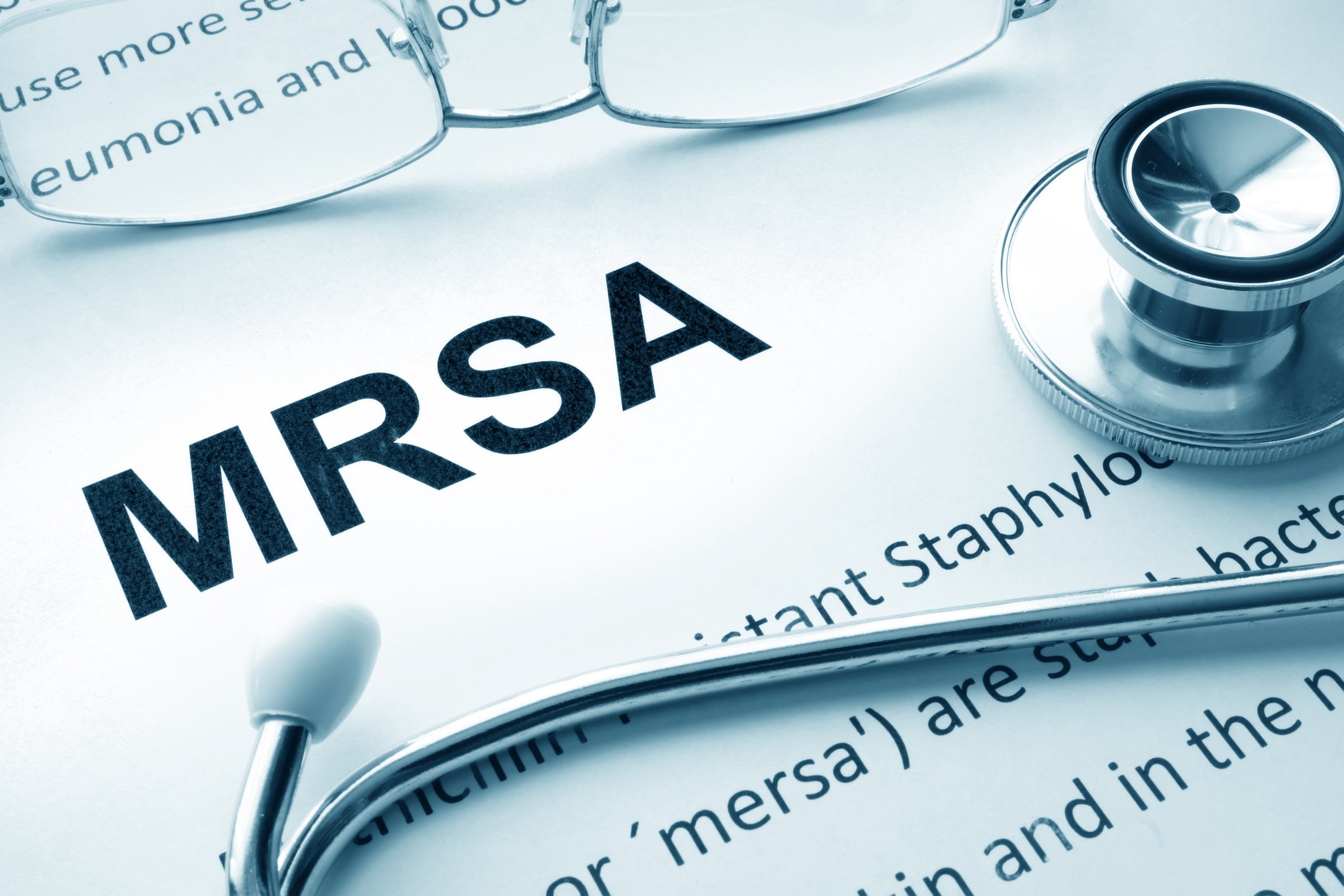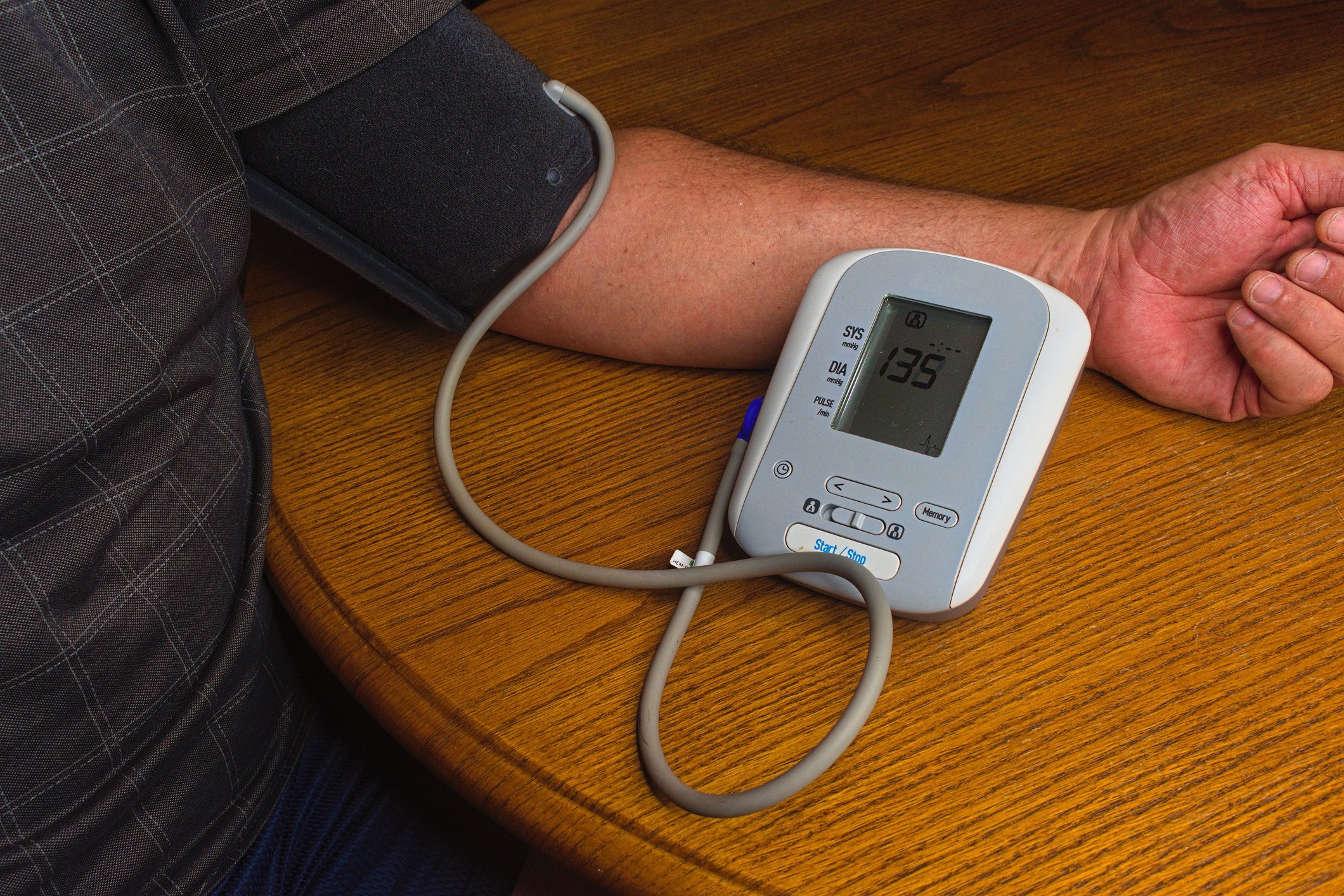What Is the Best Antibiotic to Treat MRSA?
By Libby Pellegrini, MMS, PA-C
September 16, 2025

What Is the Best Antibiotic to Treat MRSA?
Are you colonized with methicillin-resistant Staphylococcus aureus (MRSA)? It’s hard to be sure, especially if you’re not having symptoms. However, about 2% of people are colonized with this superbug, meaning they generally live in harmony with it on their skin or elsewhere, and they may not be aware that they are harboring a potential infectious agent. When MRSA lives on your skin, you may not realize it until it enters your skin through an opening. Typically, MRSA infections (also known as "staph" infections) can be treated with antibiotics that cover MRSA. So, what is the best antibiotic to treat MRSA? Read on to learn everything you need to know about the antibiotics that cover MRSA.
What is the best antibiotic to treat MRSA? MRSA antibiotics list
What is the best antibiotic for a staph infection? Getting diagnosed with a staph infection can be intimidating, but several effective antibiotics for MRSA coverage can help. Check out the list of the most common drugs below.
| Antibiotic | Drug Class | Common Dosage (Adults) | WellRx Savings Card |
| Trimethoprim-Sulfamethoxazole (Bactrim) | Sulfonamide | 800-160 mg | Link Out |
| Doxycycline | Tetracyclines | 100 mg | Link Out |
| Linezolid (Zyvox) | Oxazolidinone | 600 mg | Link Out |
| Minocycline | Tetracyclines | 100 mg | Link Out |
| Clindamycin (Cleocin) | Lincosamide | 300 mg | Link Out |
When to get antibiotics for methicillin-resistant Staphylococcus aureus?
If you are concerned that you might have a MRSA infection, it’s vital to get evaluated by a healthcare professional as soon as possible. Methicillin-resistant Staphylococcus aureus treatment can be very successful, provided you understand the principles of detection and therapy. MRSA infections of the skin usually cause “purulence,” which is a term that indicates the presence of pus. Signs of a MRSA infection of the skin include a swollen, painful bump that seems full of pus-like fluid or that is actively draining fluid. This bump may be in an area that was recently cut, abraded, or scraped, or in an area that tends to have blocked sweat glands. Often, people mistake a MRSA infection for a spider bite or other insect bite, because it can resemble these conditions. MRSA infections of other sites, such as the lungs, blood, urine, bones, joints, or indwelling hardware (such as a prosthetic heart valve), are less common, and their symptoms may be harder to identify at first. Suppose you know you have previously been colonized with MRSA, or that someone in your household has a MRSA infection (or had one in the recent past). In that case, you should have a higher level of suspicion of a MRSA infection, because MRSA infections can be highly contagious. If you’ve personally had a MRSA infection in the past, you’re more likely to develop one in the future. Certain risk factors make it more likely that you’ll need antibiotics that cover MRSA:
- Being in a group setting, such as a sports team
- Living in close quarters, such as in nursing homes, prisons, or military barracks
- Being hospitalized
- Recent antibiotic use
- Undergoing Invasive procedures
- Indwelling urinary catheter use
- Having open wounds
- Being on hemodialysis
- Having an immunosuppressive condition like HIV
- Using IV drugs recreationally
What antibiotics treat MRSA?
How to get rid of MRSA? And can you prevent MRSA in the first place? When MRSA enters your skin through a scrape, cut, or other contact, it can cause an infection known as a MRSA skin infection, also referred to as a staph infection. A MRSA skin infection can develop rapidly and cause symptoms such as a swollen or raised bump, potentially filled with pus or leaking fluid. Therefore, it’s imperative to be vigilant about MRSA bacteria avoidance in your environment. While MRSA can be tricky to eliminate, there is a MRSA cure in the form of effective antibiotics. A MRSA skin infection can usually be treated with MRSA oral antibiotics. However, you may need intravenous (IV) antibiotics for MRSA. Check out the list of antibiotics that cover MRSA below.
Doxycycline
Doxycycline is in the tetracycline category of antibiotics. It helps treat MRSA infections by stopping the bacteria’s ability to synthesize proteins, thereby blocking their growth. The advantages of using doxycycline for MRSA coverage include its availability in oral form, its low cost, and an easy dosing schedule. The disadvantages of using Doxycycline as a MRSA medication include: it must be taken on an empty stomach, it can cause light sensitivity and easy sunburns, it is not safe in pregnancy or breastfeeding, and it can cause liver damage (very rarely).
Trimethoprim-Sulfamethoxazole
Trimethoprim-sulfamethoxazole (also known as Bactrim) is in the category of antibiotics known as sulfonamides. It helps treat MRSA infections by inhibiting the bacteria’s ability to produce folate, thereby preventing the further synthesis of DNA and proteins. The advantages of using Bactrim for MRSA coverage include its availability in oral form, its low cost, and an easy dosing schedule. The disadvantages of using Bactrim as a MRSA medication include: it can cause an adverse flushing reaction when combined with alcohol, it can cause light sensitivity, it is not safe in pregnancy or breastfeeding, and it needs to be dose-adjusted if you have decreased renal function. Bactrim is a sulfa drug, so it should not be used in anyone with a sulfa allergy.
Clindamycin
Clindamycin (also known as Cleocin) is in the category of antibiotics known as lincosamides. It helps treat MRSA infections by stopping the bacteria’s ability to make proteins. The advantages of using clindamycin for MRSA coverage include its availability in oral form and its low cost as a medication. The disadvantages of using clindamycin as a MRSA medication include: it has a more strenuous dosing schedule (three to four times daily), and it has been associated with C. difficile diarrhea infections.
Minocycline
Minocycline is in the tetracycline category of antibiotics. It helps treat MRSA infections by stopping the bacteria’s ability to synthesize proteins, thereby blocking their growth. The advantages of using minocycline for MRSA coverage include that it is available in oral form and has an easy dosing schedule. The disadvantages of using minocycline as a MRSA medication include: it can cause pill esophagitis (so you must take it with sufficient water and remain upright), it can cause light sensitivity, it is not safe in pregnancy or breastfeeding, and it can cause liver damage (very rarely).
Linezolid
Linezolid is in the oxazolidinone category of antibiotics. It helps treat MRSA infections by stopping the bacteria’s ability to synthesize proteins, thereby blocking their growth. The advantages of using linezolid for MRSA coverage include: it is available in oral form, it can be taken with or without food, it doesn’t require dosing adjustments if you have decreased renal function, and it has an easy dosing schedule. The disadvantages of using linezolid as a MRSA medication include: it is not a low-cost medicine, it can cause abnormal blood cell production, and it has been associated with C. difficile diarrhea infections.
Vancomycin
Vancomycin is a tricyclic glycopeptide antibiotic. It helps treat MRSA infections by stopping the bacteria’s ability to synthesize cell walls, which leads to the death of the cells. The advantages of using vancomycin for MRSA coverage include its suitability for use in all age groups, including infants, and its status as a highly effective intravenous antibiotic for MRSA. The disadvantages of using vancomycin as a MRSA medication include: it has low bioavailability (meaning that it must be given as an IV antibiotic for MRSA infections), it can cause a skin flushing syndrome if given too rapidly, and it causes damage to the kidneys and the ears (it is both "nephrotoxic" and "ototoxic").
Daptomycin
Daptomycin is a cyclic lipopeptide antibiotic. It helps treat MRSA infections by interfering with the function of the bacteria’s cell membranes, ultimately leading to cell death. The advantages of using daptomycin for MRSA coverage include its use in adults and children over 12 months of age, its high effectiveness as an IV antibiotic for MRSA, and its relative safety during pregnancy. The disadvantages of using daptomycin as a MRSA medication include: it must be given as an IV antibiotic for MRSA infections, it needs to be dose-adjusted if you have decreased kidney function, and it can cause muscle damage and breakdown.
Mupirocin
Mupirocin is a polyketide antibiotic. It helps treat MRSA infections by stopping the bacteria’s ability to synthesize proteins and RNA, which makes it impossible for bacteria to grow. The advantages of using mupirocin for MRSA coverage include that it is in a topical form, not systemically absorbed, well-tolerated, and can be used to decolonize individuals with MRSA growing on their skin or in their nose, even without active signs of infection. The disadvantages of using mupirocin as a medication for MRSA include that it is not recommended for acute MRSA infections because it is not a systemic medication, and resistance to mupirocin is increasing as its worldwide use expands.
Are the MRSA antibiotics available over the counter?
No. There are no antibiotics available over-the-counter to help treat MRSA. MRSA meds all require a prescription. Essentially, MRSA antibiotic treatment requires involvement of a healthcare professional who can diagnose you with a staph infection and then keep track of your treatment progress. If the antibiotic needs to be changed, it’s best to have a professional with this line of contact and consistency, rather than trying to manage treatment for MRSA on your own.
What is the strongest antibiotic for a staph infection?
The strongest antibiotic for staph infection, or the best MRSA med, depends on your personal medical history and whether you have had any recent antibiotic use. Suppose you have had a MRSA infection identified on a culture (such as a wound culture that analyzed drainage from a wound). In that case, your healthcare provider will be able to specifically identify the best antibiotic to treat MRSA in your particular case. This happens when a test called a “sensitivity” test is also performed on a lab culture. In a “sensitivity” test, a particular organism’s sensitivities indicate which antibiotic can most effectively stop or inhibit its visible growth (seen as colonies on an agar plate in the lab). Sensitivities are provided in list form, comparing a list of tested antibiotics against the bacterial species causing your specific infection. Your healthcare provider can identify which antibiotic has the lowest minimum inhibitory concentration (MIC), which means that it takes the least amount of the medication to kill the bacteria. The antibiotic with the lowest MIC number, then, would be the most potent antibiotic for staph infection in this case.
What are the best oral antibiotics for MRSA?
The best oral antibiotics for MRSA are currently trimethoprim-sulfamethoxazole (Bactrim), doxycycline, clindamycin, minocycline, and linezolid. Other oral antibiotics that were once effective are now considered to have too much antimicrobial resistance to treat infections safely. Microbiologists and public health officers do not consider the best oral antibiotics for MRSA to be fixed, as they track antimicrobial resistance patterns and update guidelines based on what trends they discover. As the bacterial species responsible for MRSA infections evolve, resistance to the current medications available will likely increase, necessitating the development of new drugs or alternative forms of treatment.
What are the best IV antibiotics for MRSA?
The best IV antibiotic for MRSA is currently vancomycin, which experts have called the drug of choice for MRSA infections that require hospitalization and intravenous therapy. If vancomycin is not available, daptomycin may also be used. Unfortunately, some MRSA infections have developed antimicrobial resistance even to vancomycin—these are known as vancomycin-resistant Staphylococcus aureus (VRSA) infections. While these cases are rare, they underscore the importance of using antibiotics only when necessary to reduce antimicrobial resistance.
How fast does a MRSA antibiotic treatment usually last?
The treatment duration for methicillin-resistant Staphylococcus aureus (MRSA) usually depends on several factors. If you are treating a staph infection of the skin, your provider may prescribe a course of oral antibiotics for MRSA that lasts anywhere from 5 to 14 days. However, if your infection is located in an atypical site, such as a bone or joint, the duration of the antibiotic course may be significantly longer. Once you begin treatment with antibiotics that cover MRSA, you must follow your healthcare provider’s specific instructions about how to take the doses. Keep track of any side effects or reactions so that you can share this information with your healthcare provider.
How to take antibiotics for MRSA
If your healthcare provider suspects that you have a staph infection caused by MRSA, you will need to begin antibiotics that cover MRSA. The MRSA medication that will work best for your infection will depend on a host of factors, including your personal health history (including your kidney function and past MRSA infections), any allergies to medications, any recent antibiotic prescriptions, and other medications that you may also be taking. Additionally, depending on the severity of the infection, you may need to use IV antibiotics for MRSA instead of relying on oral MRSA coverage. Once you have the prescription in hand, make sure to read the directions thoroughly. Some MRSA skin infection treatment antibiotics require you to take the medication on an empty stomach, and some are better tolerated when taken with food or water. Medicines in the tetracycline class (such as doxycycline and minocycline) also require you to have increased sun protection when you are taking them, because they cause photosensitivity and you’re more likely to get a sunburn compared to when you’re not taking them. You should avoid medications like Bactrim if you are pregnant or trying to conceive, and you should also not combine them with alcohol. Ensure you understand how frequently to take each medication, as well as the duration of treatment (typically, you should complete the full course of drugs, even if your symptoms have improved).
How to get rid of MRSA using natural remedies
Generally, MRSA infections require MRSA medications to be cured. The bacteria that cause MRSA infections are notoriously resistant and difficult to eradicate. Natural remedies should not take the place of treatment from a medical professional. However, if you’re motivated to use natural remedies instead of pursuing the best antibiotic for MRSA, or to complement your MRSA medication, you may consider the following:
- Remedy 1: Researchers have found that apple cider vinegar (ACV) can have an antimicrobial effect on MRSA. In their studies, researchers suggest diluting ACV in water before drinking it to make it less caustic to the throat upon swallowing.
- Remedy 2: In some studies, garlic extract has been found to have antimicrobial activity against MRSA. In general, garlic can have a strong antibiotic effect by supporting the immune system and preventing a cascade of pro-inflammatory cells that can accompany a MRSA infection.
- Remedy 3: If your infection is pus-filled or purulent, one of the most important ways to clear the infection is to drain the pus. While this should not be done on your own without a healthcare professional, if you have an open wound that appears to be draining, you can help gently encourage the drainage’s removal.
How to prevent MRSA
Sometimes, there’s nothing you can do to avoid getting a MRSA infection. However, a few methods can reduce the likelihood of getting MRSA. Some tips are more specific to MRSA, while others are more general and can help you avoid a host of bacterial infections.
- Use proper handwashing techniques: Clean and wash your hands with soap and water for 20 seconds after using the restroom, before eating or preparing food, and whenever you have come into contact with a contaminated surface. If you are unable to wash your hands, use an alcohol-based sanitizer.
- Use a medicated body wash: If you’ve had a MRSA infection in the past, you’re known to be colonized with MRSA, or you have been in close contact with someone with MRSA, you can lower your chance of getting a MRSA infection by using a medicated body wash like chlorhexidine (Hibiclens). This body wash is available over-the-counter at most pharmacies. Chlorhexidine is an antiseptic solution that can be safely used, and studies have shown that it can reduce MRSA colonization of your skin.
- Avoid contact with open wounds: You can lower your chance of getting MRSA by not touching another person’s wounds. If you accidentally touch an open sore, wash your hands with soap and water as soon as possible. If you are working in a healthcare setting, follow the “contact precautions” put in place for working with patients suspected to have MRSA.
- Wipe down public surfaces before using them: If you are exercising in a public area, such as a gym, make sure to wipe down equipment before using it to prevent contracting unwanted infections. Making sure to wipe down surfaces in locker rooms or other shared areas can also help.
- Don’t share personal items with others: Avoid sharing items like combs, razor blades, clothing, bed sheets, towels, or toothbrushes with other people.
- Keep cuts or scrapes covered: If you have an open wound or sore, ensure it remains clean and covered with a band-aid when spending time in a communal setting, such as a gymnasium.
To avoid having to take antibiotics for a MRSA infection, you can familiarize yourself with the CDC’s “5 Cs” of MRSA Transmission: Crowding, Contact, Compromised skin, Contaminated items and surfaces, and Cleanliness.
Get your free ScriptSave® WellRx account and start saving on your medications
| If you have been diagnosed with a MRSA infection or another type of skin infection, a prescription antibiotic will likely be needed. Make sure to get your free WellRx account and start saving on your medications. The average participant can save up to 80%* on prescription medications. |
*DISCOUNT ONLY – NOT INSURANCE. The program is administered by Medical Security Card Company, LLC.
FAQs related to antibiotic treatment for MRSA
Does doxycycline cover MRSA?
Yes, doxycycline is an effective treatment option for MRSA skin infections. Doxycycline does treat staph, and it is considered a safe option when you need an oral antibiotic for MRSA coverage. Doxycycline is often one of the first-line medications prescribed for MRSA infections that are acquired in the community (versus in the hospital).
Does clindamycin cover MRSA?
Yes, clindamycin does typically cover MRSA. Clindamycin is in a pharmacologic class known as lincosamides, and it is the most widely used of its class. Clindamycin is often used to treat skin and soft tissue infections, such as those caused by MRSA, and it is valuable as an alternative to penicillin for individuals with penicillin allergies. However, some MRSA infections are no longer effectively treated by clindamycin, because resistance to clindamycin has developed.
Does Bactrim cover MRSA?
Yes, Bactrim MRSA coverage is considered to be excellent. Does Bactrim treat MRSA, then? Yes, it does. Bactrim (also known as trimethoprim-sulfamethoxazole) is often one of the first-line medications prescribed for MRSA infections that are acquired in the community (versus in the hospital).
Does Keflex cover MRSA?
No, the medication known by the brand name of Keflex (or generic name of cephalexin) does not cover MRSA. Keflex is in a pharmacologic class of drugs known as cephalosporins, and it is an effective medication for skin infections caused by methicillin-susceptible Staphylococcus aureus (MSSA) infections, but not MRSA.
Does mupirocin treat MRSA?
The answer to this question is twofold. In certain contexts, topical mupirocin can treat MRSA, such as when MRSA colonizes the body but no symptoms of infection are present. However, if you have a purulent wound or skin infection, mupirocin is not the best antibiotic to treat MRSA. In this case, an oral or intravenous medication is needed.
Does Augmentin cover MRSA?
Does Augmentin cover MRSA? The answer to your question lies in the nature of augmentin itself. Augmentin is a combination of amoxicillin and clavulanic acid. Amoxicillin is a beta-lactam antibiotic that kills bacteria by preventing the creation of cell walls. Unfortunately, MRSA has developed resistance to beta-lactam antibiotics.
How effective is clindamycin for MRSA?
Clindamycin is generally effective in treating MRSA. Historically, clindamycin has been used to treat MRSA infections because the bacteria were sensitive to this antibiotic. However, does clindamycin now cover MRSA? The answer is yes, but resistance is growing. In the future, using clindamycin for MRSA may ultimately result in inadequate treatment of the infection and potentially a worse outcome.
How effective is Bactrim for a staph infection?
Bactrim can be highly effective for treating staph infections. However, as with all antibiotics, the efficacy of Bactrim varies from one community to another, so medical professionals use sensitivities and local resistance patterns to guide their care. Bactrim is often one of the first considerations when choosing an oral antibiotic for MRSA treatment.
What 3 antibiotics is MRSA resistant to?
As its name suggests, methicillin-resistant Staphylococcus aureus (MRSA) is resistant to methicillin. It is also resistant to other medications in the methicillin family, such as penicillin and amoxicillin. MRSA is also resistant to most antibiotics in a related pharmacologic class, known as cephalosporins, the most famous of which is Keflex (cephalexin).
References
https://www.ncbi.nlm.nih.gov/books/NBK539793/
https://pmc.ncbi.nlm.nih.gov/articles/PMC6627156/
https://www.ncbi.nlm.nih.gov/books/NBK482221/
https://pmc.ncbi.nlm.nih.gov/articles/PMC7913839/
https://www.cdc.gov/staphylococcus-aureus/about/vancomycin-resistant-staph.html
https://www.nature.com/articles/s41598-020-78407-x
https://jamanetwork.com/journals/jamanetworkopen/fullarticle/2776969
https://www.cdc.gov/niosh/docs/2013-112/pdfs/2013-112.pdf
https://www.ncbi.nlm.nih.gov/books/NBK513232/
https://www.ncbi.nlm.nih.gov/books/NBK555888/
https://www.ncbi.nlm.nih.gov/books/NBK554519/
https://www.ncbi.nlm.nih.gov/books/NBK459263/
https://www.ncbi.nlm.nih.gov/books/NBK599499/
Recommended Articles









